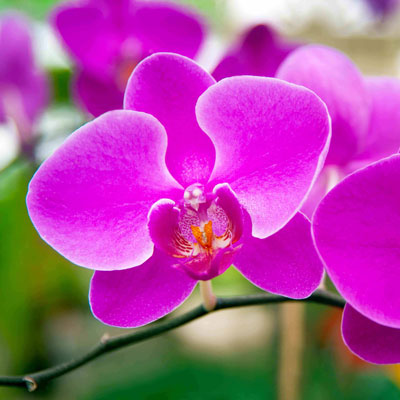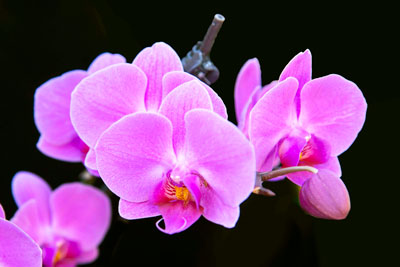An Orchid Anyone Can Grow
If you ever thought you couldn’t grow orchids, you need to try a Phalaenopsis moth orchid. If you’re just a little bit patient, they’ll reward you with some of the most stunning floral sprays you’ve ever seen, and they’ll do it year after year.

Thanks to tissue culture propagation (where thousands of new plants can be started in the time it used to take to grow only a few), moth orchids have become the best-selling flowering houseplants in America today.
They bloom primarily in winter and very early spring, so you’ll be seeing their handsome flowers in shades of lavender, purple, white, pink and apricot. Truth is, you can find them almost year-round in nurseries, flower shops and groceries.

Tips to success with these orchids…
• Very bright light, but no direct sunlight during the summer. East windows have worked well for me, but we also have shade trees filtering some of the morning sun in summer.
• Extremely porous planting mix, primarily small lava rock or coarse bark. These plants are epiphytes, meaning they grow in nature suspended from the trunks of trees in the rain forest.
• Aim to repot them every couple of years. If you’re using the highly organic planting mix, it breaks down rather quickly and must be replaced. Spring is the best time to do so.
• Keep them constantly moist, but never soggy wet. Allow the planting mix to become somewhat dry before you water again.
• Fertilize with a high-nitrogen, water-soluble plant food every month during the spring, summer and fall, less often during the dark days of winter.
• Once the flowers have all fallen, let the old stalk be your guide. If it shrivels and turns brown, trim that portion off. Some people prefer to cut the stalks back to within a couple of inches of the soil line to force them to regrow straight and true from down below. Others let them send out new flowering shoots from the old stalks. You just have to be prepared to stake them securely.
Looking for a little additional help? Here is a helpful page from the American Orchid Society on care of Phalaenopsis orchids.

I have had excellent luck growing orchids (and African violets) in Lechuza self-watering pots. They’re crazy expensive, but it’s a one-time cost and the results make it worthwhile. I have chosen their Maxi-Cube pots in charcoal metallic gray. Here is a link to their website.
